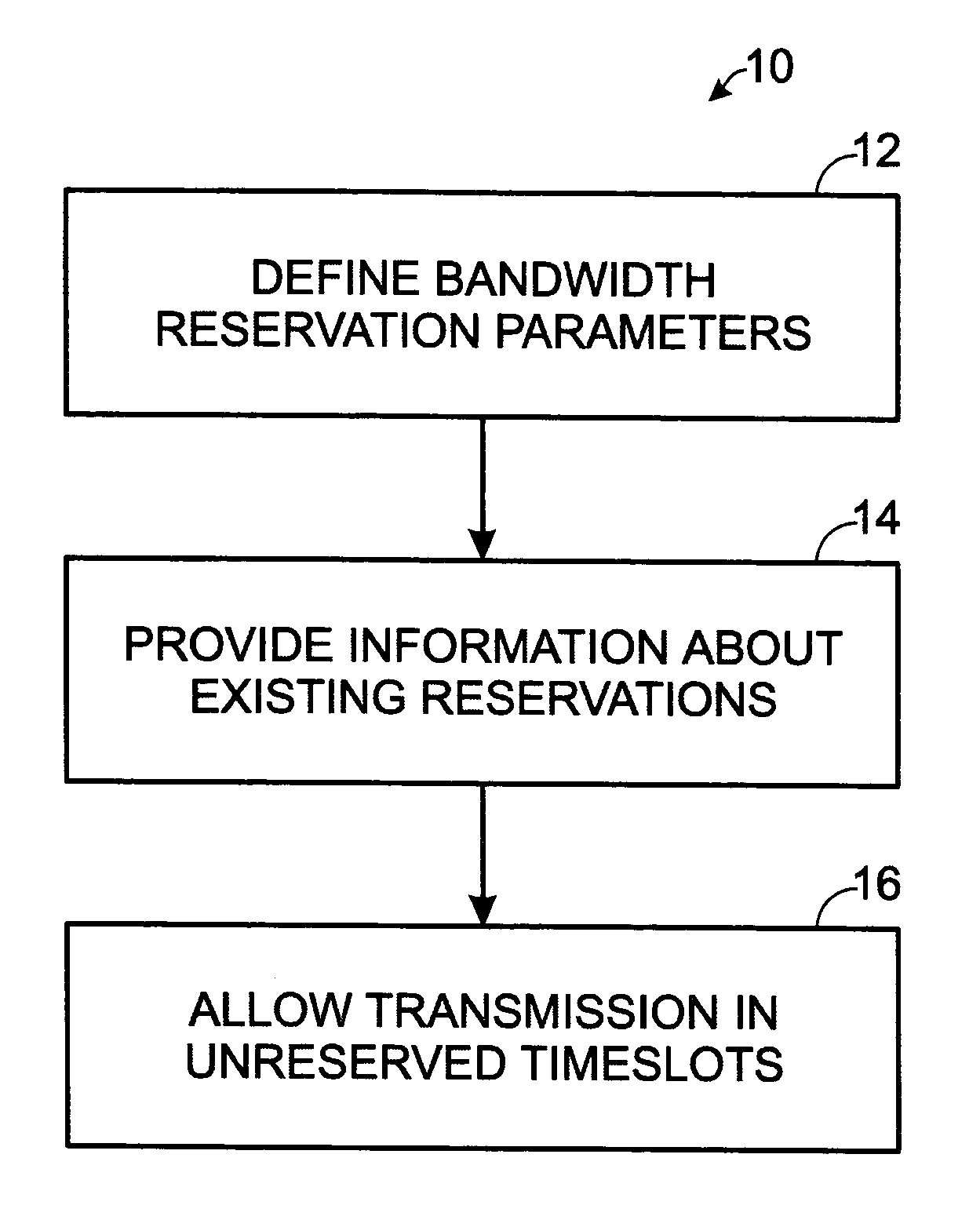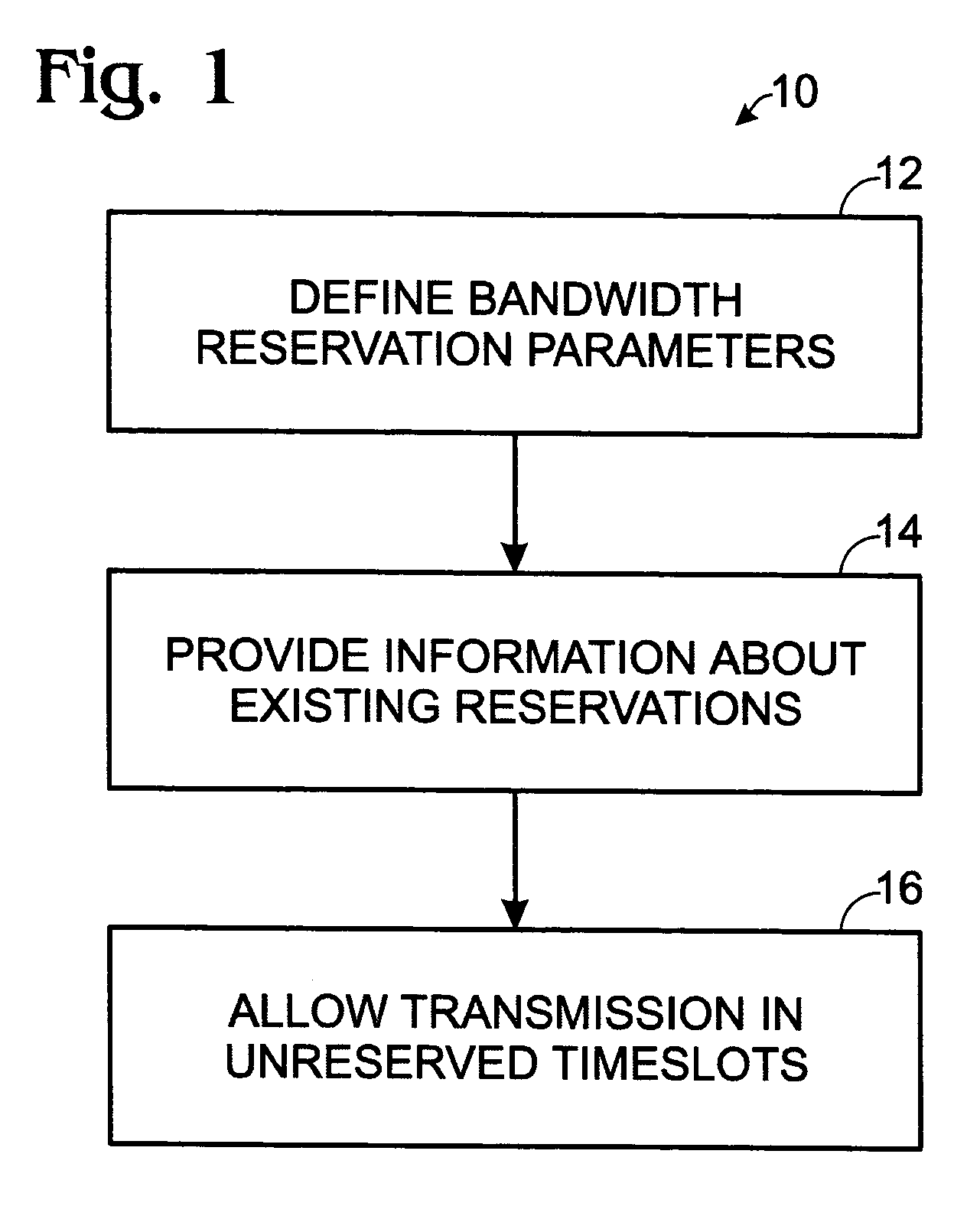Method and system for detecting pending transmissions in a wireless data network
- Summary
- Abstract
- Description
- Claims
- Application Information
AI Technical Summary
Benefits of technology
Problems solved by technology
Method used
Image
Examples
Embodiment Construction
[0017] This invention advertises a time divisional multiple access (TDMA) channel allocation made for a recurring pattern of time slots over a period of time in each data packet transmitted as part of the allocation. It enables wireless stations with limited power, mobile nodes, and nodes operating in challenging conditions to achieve Quality of Service (QoS) without unrealistic reliance on central controllers. It dispenses with the Superframe structure, common to IEEE 802.15.3 and many other approaches, replacing it with an implicit Superframe serving simply as a common time base to all reservations. Referring to FIG. 1, the method of the invention is depicted generally at 10, and defines bandwidth reservation parameters 12, and does not define any particular medium access control (MAC) protocol or any of the conventional methods of using the bandwidth reservation parameters, thus, may be used with any number of MAC protocols, regardless of whether the specific MAC protocol uses Su...
PUM
 Login to View More
Login to View More Abstract
Description
Claims
Application Information
 Login to View More
Login to View More - R&D Engineer
- R&D Manager
- IP Professional
- Industry Leading Data Capabilities
- Powerful AI technology
- Patent DNA Extraction
Browse by: Latest US Patents, China's latest patents, Technical Efficacy Thesaurus, Application Domain, Technology Topic, Popular Technical Reports.
© 2024 PatSnap. All rights reserved.Legal|Privacy policy|Modern Slavery Act Transparency Statement|Sitemap|About US| Contact US: help@patsnap.com









